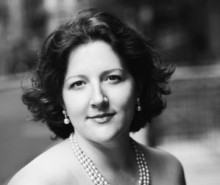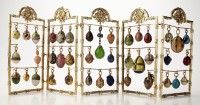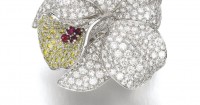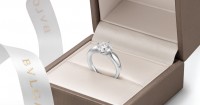Lauren Cerand: Beauty is in the Balance
[portfolio_slideshow include=”1649″]
The good life, however one might define it, relies on intention.
BY LAUREN CERAND
- Lauren Cerand by Zack DeZon
If you had happened to walk by a certain pool in Austin this afternoon, you might have seen me pirouetting around the shallow end while audibly humming “As Times Goes By.” I dipped out once to continue a conversation on email about which spring galas a friend and I ought to attend –– he’s a Hollywood darling making his mark on the literary scene –– and then slid back in to the sanctuary of my solitude, the ultimate luxury. I realized today that one invitation I have, for a gathering at a house in London built for a Duke and now owned by a shipping magnate, conflicts with another in New York that benefits a cause that’s very important to me. Life is full, as always, of difficult choices.
People often assume that my days are a string of pearls, each moment and experience as flawless as the next, when, naturally, nothing is further from the truth. Last week I ran into a friend who said she’d like to invite me out to her high desert idyll, but frets it wouldn’t be fabulous enough. I told her that I’d happily spend half my time at an ashram and the other half in a fur coat. Balance is what makes good things appreciable to me.
I’m also a believer in giving people and whatever situation is at hand my full attention. Intention, more than anything, dictates outcomes, especially when it comes to the good life, however we each define it. I once spent a morning at a zen practice center pitting plums. It feels like four hours in my mind, but it may have been only two. I remember the endlessness of it, and the way that everything else fell away. I remember, too, that I’ve never seen such beautifully-plated food as what came out of that largely volunteer-staffed kitchen. It’s easy to rack up debt or buy six of the wrong thing, or spin through life like a top, if what you’re aiming for still eludes you. The only way to find that out is to go someplace quiet and think about it. No shortcuts to it, and that’s an exquisite thing.
Of course I daydream of glimmering jewels, captivating men, and country houses. But I only need the very best one of each of those things. In fact, in almost all measures, quantity does nothing to quench my desire. It’s more likely, truly, to turn me right off, except in cases of flowers and hospitality. And in truth, it’s the ordinary experiences of life that can teach us the most. Wabi-sabi is the Eastern principle that things are improved by the simple notion of experience, and best illustrated by the idea that filling in a cracked teacup with gold makes it more valuable. People can be that way, too.
- West Texas landscape, just outside Marfa.
Right now I’m wearing a strand of rubies that I bought last week with the fee I charged for a speaking engagement at a venture capital firm, discussing social media strategies with the CEOs of half a dozen start-ups. A few days before that, I’d received in the mail an essay by Muriel Spark on meeting Edith Sitwell: “She had no doubt whatsoever of what the artist in literature was about. High priests and priestesses.” The publisher of that book also happens to be an extraordinary jewelry designer and before I knew it, I was at her storied West Village atelier, hearing tales of her last swinging party, filled with not a few bohemians and at least one baroness. I left with the rubies, dazzling dots of fire, and a little left over for the rent, and all was well with the world for another evening.
At their best, gemstones are avatars of the natural world, reflections of its nearly incomprehensible splendor on a scale that we can appreciate. Something like the mirrors that dominated domestic interiors of the Seventeenth and Eighteenth centuries, sensual beyond compare and yet fundamentally intended to economize on candlelight. Consider this passage, from Stanley Abercrombie’s A Philosophy of Interior Design ––
Ornament’s history as charm, totem and message is most easily understood when we consider ornament based on natural forms. Ornament is endlessly commenting on the natural world, sometimes in the form of abstractions from nature, sometimes in literal imitations of cabbage roses, ferns, bunny rabbits or human figures. As Joan Evans maintains, this tendency is not an unsophisticated one. It is not accurate to assume that plant and animal forms represent “the inevitable reflection of a rather primitive civilization in which to use the hallowed phrase, men [and women] lived close to nature. The exact opposite is in fact the case: such naturalistic decoration is produced in courtly civilizations in which men [and women] live in surroundings urban enough for distance to lend enchantment to their view of nature.”
–– and tell me any tennis bracelet could ever be as lovely as the first constellation you learn to recognize on your own, stretching across the night sky in full splendor. That being said, one of my favorite things to do in London is lope down New Bond Street and stare in the windows of every jewelry shop I see. That’s as celestial as it gets in town.
I recently asked some friends what they thought I should write about, and they unequivocally said they’d like to know how to be glamourous on a budget, or how to live the good life without going into debt. I think that’s a message for these times, but even more, a timeless sense that the things that are truly important have cannot be bought. For what it’s worth, though, I have found all my best furs in charity shops. When you’re short on cash and long on style, a tube of Guerlain’s Rouge d’Enfer goes a long way. Learn how to arrange your own flowers, and you’ll never be at a loss at a bodega. And one glass of champagne at the Ritz on Piccadilly is worth a dozen drinks anywhere else on Earth. For many years, though, I assumed all of that penny-pinching chic on the sly was just training for the real thing. And yet somewhere along the way, I realized that expectation, no matter how the story ends, was costing me too much in the short term.
This January, I was asked to travel to Paris and London for work for half the month, and as I type this, I’m in Texas, where I’m spending half of March with family. While it certainly isn’t financially feasible to spend money to do so, I’m actively courting options to leave New York for a spell every month or so. It’s a wonderful place to thrive in many areas, but as I’ve become wiser, I’ve realized that certain parts of my soul can only be nourished elsewhere. Tonight I’m packing for a long weekend in West Texas, in Marfa, Marathon, and on the way back, San Antonio. I want to see the stars. Beyond my wrist.
——-
Lauren Cerand publishes notes on living at luxlotus.com.
-March 2013
——-
Also by Lauren Cerand:
On Sabbatical: Embracing the luxury of time
Aphrodite and the Hundred Years Rule
Postcards from the Fairy Kingdom










